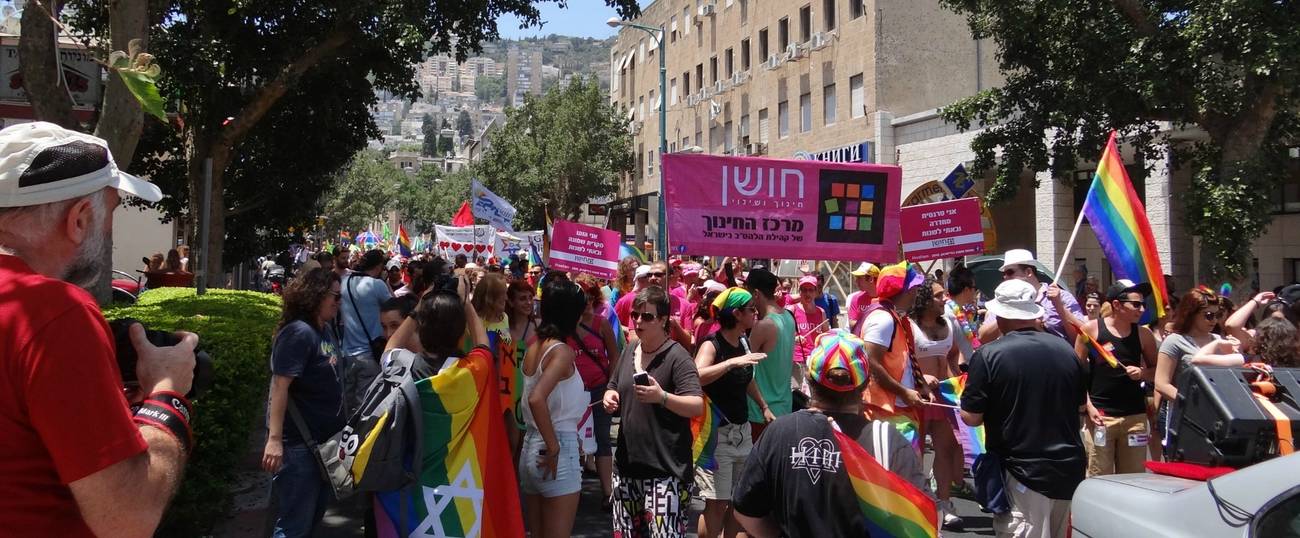Gay Photography Journal Celebrates an Israeli City. Not the One You Think.
Haifa, said Elska’s editor, is just “crying out for love.”




Whether they’re making porn, serving in the IDF, or just eating hummus, Israeli men are sexy. So it’s no surprise that Elska, a bi-monthly gay photography journal, trains its lens on Israeli guys in its latest issue.
What is surprising, however, is what’s inside.
First, the choice of city. Elska’s editors—who have previously focused issues on such widely diverse cities as Brussels, Mumbai, Yokohama, Providence, and Lviv—avoided Tel Aviv, known for its gay bars and Pride parades, and chose to showcase Haifa instead. “First, Tel Aviv felt too obvious. Everyone knows it’s a super gay place,” editor Liam Campbell writes in his editor’s note. “Second, I chose Haifa because it promised diversity… I wanted Elska’s first entry to the country to be more representative of the country’s multicultural population.”
Second, the choice of subjects. During Campbell’s two-week trip to Israel, he met a range of local men—lifelong residents and newcomers, Jews and Muslims and Christians—who live all around the city. They’re photographed in their homes, outside in their neighborhoods, or around Haifa, sometimes in various stages of undress—and occasionally entirely nude—in multi-page spreads. But this isn’t an X-rated adventure. It’s about men revealing themselves, and the brief essays the men write to accompany their photos paint a richly textured portrait of a city that Campbell says “is crying out for love.”
There’s Alex, an immigrant from St. Petersburg who’s planning to return to Russia, and there’s Or, who quotes Morrissey while explaining why he moved away to London but eventually came home to Haifa. There’s an Arab named George who talks about loneliness and trying to kill himself, and a Jew named Dotan who recalls a trick with a closeted IDF soldier that ended with a discussion of Pedro Almodovar movies. Dia talks about the difficulty of Palestinians dating Jewish guys, and poses for photos with a strategically placed keffiyeh; Boris yearns for the bigger and more exciting gay scene in Tel Aviv, and poses on the beach in a Speedo.
A Toronto native named Dan explains how after living in Jerusalem and Tel Aviv he views Haifa as “one of the only sane and hopeful places in this crazy country, a place of peace and coexistence.” But not everyone has a rosy view of Haifa: Yehonathan talks about the depression he suffered after moving from Tel Aviv, and being angry at his new city for being “unclear, uninteresting, and not taking advantage of its potential.”
Loneliness, violence, and discrimination are recurring themes, but so are coming out, dancing, and sexual connection. The photos are intimate without being vulgar or trite, and the bodies they depict seem more like the bodies you might see every day, rather than the bodies you might see on billboards or in underwear ads.
The most revealing photos, however, are the ones that aren’t there. A young man named Mohammad had agreed to pose for Elska, and was in the middle of a shoot in the old city of Akko, when he got in a fight with his mother over the telephone; she had found out about the project and left him 29 messages. Mohammad eventually relented and pulled out of the project, asking that his photos and essay be deleted. Campbell wrote his own essay about the experience, alongside a few photos from the Akko shoot where Mohammad doesn’t appear. “I didn’t delete the photos [of Mohammad], but I won’t publish them,” Campbell writes. “I only kept them because I feel that one day he might ask to see them.”
Wayne Hoffman is executive editor of Tablet Magazine.